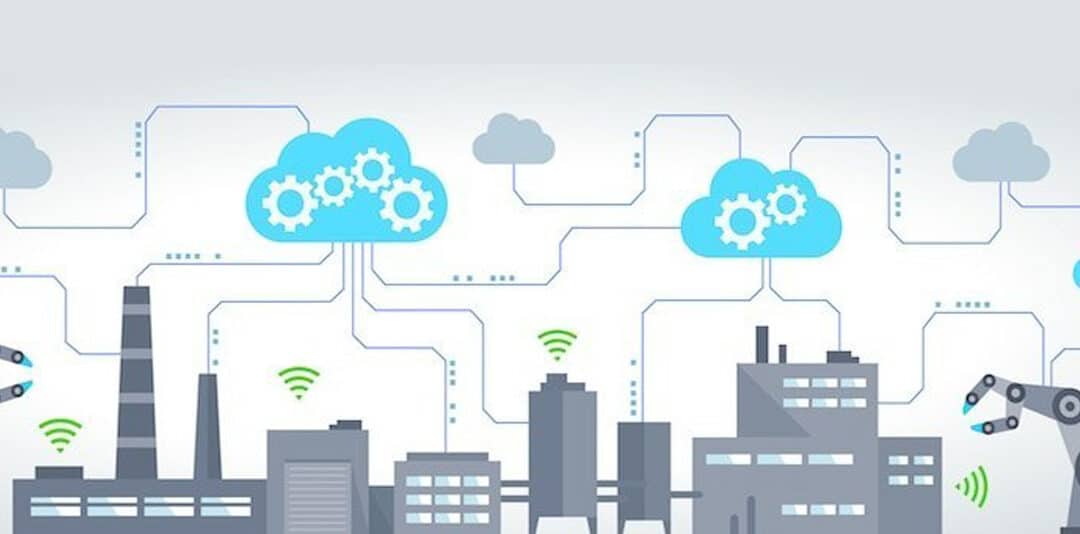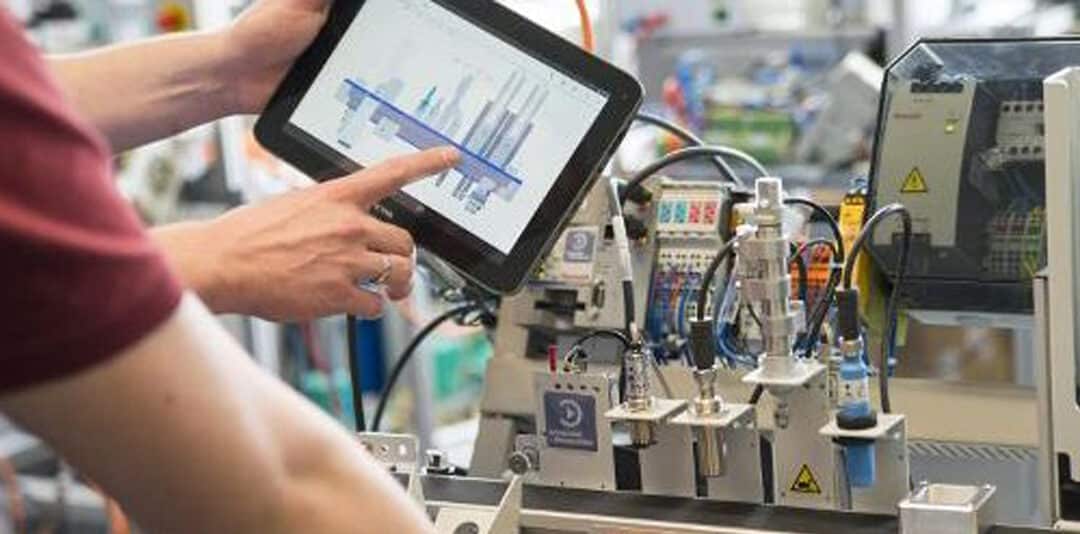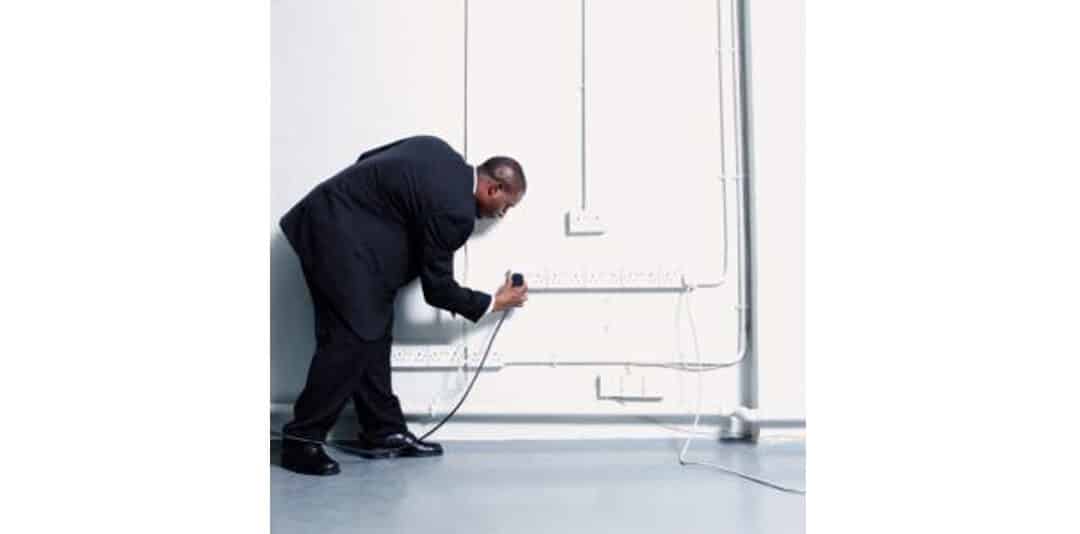by chris | May 12, 2017 | Energy

by DavidSpratt | May 5, 2017 | Energy, ICT
In the first two parts of this series I looked at what the internet of things (IoT) actually is and then at the Energy Management possibilities for businesses competing on the world stage.
In this, part three, of the series we get down to the nitty gritty of Manufacturing Production Management and how measuring energy flows and consumption can inform critical decisions.
I could make this complicated but if we really get down to the basics there are three main categories that require constant attention in a production environment: People, Processes and Technology.
People – Creating Feedback Loops
In the context of production management one of the most important variables is the performance of individual staff members. How someone uses equipment, works within a team, learns to adapt to new systems can make the difference between a highly profitable unit and one that is not.
What drives people’s decisions and actions will often come down to feedback loops. By using the Internet of Things to deliver energy monitoring information we can give people useful data about what is happening on their production line.
For example, if we can demonstrate that the team’s correct use of energy efficiency tools delivers a better product this not only reinforces their behaviour it also opens up the opportunity for them to take this information and find even better ways to improve efficiency.
How we use technology can be directly connected to the energy a unit or group of units consumes. If a lathe is running at full tilt throughout an eight hour shift does that necessarily mean that unit is being properly used? Or is the operator just running it on full because it that is what they were told to do when they first started years ago?
People make decisions at work every day. How you create feedback loops will inform those decisions more effectively and in doing so improved performance, job satisfaction and company results.
Processes
Every experienced Production Manager can tell you that each team on a production line is quite different and that their results vary considerably. The bigger question is “what causes this?”. By monitoring the flow of individual products and components through a production line we can identify bottlenecks, part shortages and defects quickly and effectively. With the Internet of Things we can break down a process into its smallest components, create various quality checkpoints along the way and eventually ensure near 100% accuracy, complete adherence to standards and instant identification of faults and tolerance variances.
Many would suggest that this is already the case in many well-run sites. But what happens off site with the parts we order and the products we ship?
The key to the internet of things is that our production process begins at the point where a component is ordered , right through the creation of unique SCU’s or products and all the way to the end user’s home, office or factory. This is because we can now potentially track billions of components throughout the supply chain at a cost much lower than we ever thought possible.
Technology
Remember the Internet of Things is not just adding an RFID tag to a unit and tracking it. It is about potentially billions of components that communicate. This can be back to a central point, with multiple other components, with the warehouse, the truck and of course with the end user.
By integrating Internet of Things components to the technologies we use in making things we can establish how one production line consumes energy at a fairly constant rate while another’s consumption appears to ebb and flow throughout the day.
In this instance we might have identified human errors, a malfunctioning device or quality issues with the parts or components being used on this line.
For the first time in our history we can easily measure our technology’s performance down to the tiniest detail. We are no longer limited by the number, location or stage of development of any component.
The Internet of Things opens a world of opportunities for us to deliver better quality at a lower cost and more reliably than ever before.

by DavidSpratt | Feb 27, 2017 | Energy, ICT
Over Christmas 2015 I spent a lot of my beach time getting sun burnt and considering the threat of global warming to my kids and to their kids.
I eventually decided that, to save the planet, I could start by measuring the energy consumption of every electrical device in the world. This would help people understand how to use these devices more efficiently, they would use less energy and “voila” world saved!
The only problem is – how the heck do I talk to every electrical device in the world? More importantly – how do I get them to talk back to me?
Welcome to the emerging world of the Internet of Things
The Internet of Things? What the heck is that?
All many of us know about this topic is via TV or the newspaper with an over hyped American guru telling us how our new fridges will know whether we are about to run out of milk and will place an order for delivery that day.
Now, to be honest, I don’t want Countdown to know that every week I drink four dozen beers, scoff sixteen packets of crisps and kill my inner sadness with endless king size bars of dairy milk chocolate.
So why am I writing an article trying to explain and justify something that sounds a little bit too much like big brother is watching? Because it matters. Because the Internet of Things is about how our businesses can sustainably compete in the future.
(more…)

by RichardGardiner | Feb 20, 2017 | Energy
I formed our company in 1999, with the energy part of our business covering both procurement (a commercial focus) and energy use optimization (a technical focus). Both are designed to minimize the expenditure of our business clients.
The energy sector where we operate has been significantly affected by the climate change debate. Knock-on effects of which have included the introduction of the Emissions Trading Scheme (a significant new tax) and the closure of various fossil fuel-based power stations in North Island.
The purpose of this blog is to step back from some of the partisan attitudes on this issue and hopefully take a balanced pragmatic view.
The Weather Machine
Let me emphasise from the outset that I have a background in economics and energy – not climatology. Climatology has however interested me since reading Nigel Calder’s book, The Weather Machine, in 1974. It is a subject that all of us should be concerned about for a raft of very obvious reasons.
(more…)

by chris | Feb 13, 2017 | Energy
For many businesses, energy can make up a large portion of the cost of doing business however in many cases it is not subjected the same level of scrutiny that other expense areas do. Often getting a better price through procurement is seen as good enough or all that can really be done when it comes to managing energy as businesses are so focused on their core purpose or there is not an available resource to execute an energy management plan.
Retail pricing is increasing
Over the last 12 months or so we have seen over the counter retail pricing slowly increasing. The 15-20% energy savings of 2 or 3 years ago are now a distant memory however customers are still able to contract similar or slightly improved pricing compared with their expiring agreements.
What can be done? It’s like the old saying, give a person a fish and eat for a day, teach a person to fish and they can eat for a lifetime.
Long-term energy savings
Energy management can be seen in the same way, getting a better “deal” is only a short-term fix and should be part of a much wider strategy. Understanding how and where energy is being consumed, measuring and reporting on energy, understanding how energy use is impacted by changes in production and or environmental conditions can lead businesses to make informed strategic decisions about their longer-term goals so that these align with their wider business plans.
In our experience, customers who understand and measure where energy is being used to instigate change can achieve savings of 10% or more.
More detailed analysis can be done that will identify cost-effective savings in the range of 20-25%, and total savings of up to 40% including large capital measures. Once implemented, these savings can be forever rather than just for a 2 or 3-year energy retail contract term.
Measurable energy efficiency drives results
While many businesses track their site level energy costs and kWh volume, and have a fair idea about what systems are the most energy hungry, many customers cannot point to concrete data that underpins their view.
In a recent survey conducted by IPSOS on behalf of EECA, respondent businesses stated that energy efficiency is not seen as a top priority, however I would ask, what risk are you taking if the competition takes a different view?
The top 6 priorities were listed as:
- Employee Safety
- Longevity
- Achieving Growth
- Brand Development
- Employee Relations
- Productivity
Around 50% of respondents said that improving energy efficiency would have a direct impact on the above.
If we apply the principle of Moore’s law (computer chips will run twice as fast and halve in price every eighteen months) to energy, technological advances will bring product efficiencies in time but at this stage replacing a HVAC system or production line like we would replace our iPhone every couple of years remains out of the question. But that’s changing fast.
Smart energy monitoring is here!
The Internet of Things gives us the ability to assign a unique internet identifier to a virtually unlimited number of devices anywhere in the world. That means we can monitor the performance, or activity, on a unit by unit basis: collecting device-level energy data is much easier and more affordable.

Smart energy metering has now mostly been rolled out in New Zealand so customers can access half hour meter reads. While this provides a plot summary it cannot deliver the whole story.
A common barrier for businesses implementing an energy management strategy is that measuring consumption behind the revenue meter and at a high level of granularity has in the past been expensive and relatively difficult.
With the Internet of Things beginning to enter the large commercial and industrial space this is a thing of the past. Total Utilities can provide Panoramic Power’s nonintrusive, cost effective, and scalable metering solution along with a range of consulting services based on an OPEX pricing model.

Safer, cheaper, better — with the Internet of Things
Gaining visibility of device level behaviour leads to a better understanding of usage cycles and patterns. It can also change the way in which regular maintenance is carried out. While the change to preventative maintenance is a huge improvement on responsive maintenance this still leaves a lot to be desired in terms of cost management and efficiency.
Benchmarking similar pieces of equipment, systems or comparable locations can be a good way to understand when maintenance should be carried out however a device level data lead model of predictive maintenance can be adopted if customers can measure granular energy usage and operational up / down time.
A data-led energy strategy may lead to;
- Real and measurable long term energy savings.
- Improved environmental conditions.
- Increased staff productivity.
- Improvements in health and safety through predictive maintenance.
- Reductions in insurance premiums by monitoring energy intensive equipment that stores perishable or fragile products.
- Marketing value for green credentials.
Having an energy management strategy could be the difference in making more profits than your competitors, winning more competitive contracts, or securing longer term tenants through a lower delivery cost, a more productive work force or a more comfortable environment.
So, what can you do?
Total Utilities can be your virtual energy manager providing a pragmatic and full end to end approach in helping your business transform energy from just a cost of doing business to a strategic and competitive advantage.

For more information on the services that we provide, click the links below:
Energy Monitoring and Targeting
Energy Management and Strategy
Energy Procurement
Energy Audits and Feasibility Studies
NABERSNZ ratings
To discuss your specific requirements and how we might assist your business please contact me on 021 650 336, [email protected] or Pushkar Kulkarni on 021 273 4337, [email protected]

by chris | Nov 7, 2016 | Energy
Unfair contract terms provisions were introduced in March 2015 as part of changes to the Fair Trading Act. The provisions are designed to protect consumers from contract terms that create a significant imbalance of rights or obligations between the company and the consumer.
Energy Contracts in New Zealand
The Commerce Commission has now completed its review of retail energy contracts (including retailer feedback) to ensure that they meet minimum standards required by the fair trading act. While focused heavily around the consumer market the results of the review will have an impact on commercial customers.
This is mainly in the area of liability and automatic renewals with opt out clauses along with contract termination fees that are applied to auto renewed contract terms. A review of these clauses has been long overdue, as an adviser and consultant this is an area that we have always held a negative view and retailers have been at times very stubborn when proposed changes are requested. For our customers, clauses such as this have always been highlighted and further contextual information requested especially around liability.
Commissioner Anna Rawlings said,
The majority of the nine energy companies included in the review had made real efforts to comply with the provisions before they were introduced. However, we did identify 59 terms that we considered potentially unfair. Many of the terms were common across the contracts, particularly those that limited the liability of the company, allowed the company to unilaterally vary the contract or automatically renewed fixed term contracts unless the customer opted out.
The commission ruled on these areas as follows:
- Liability needs to be balanced between the retailer, customer and distribution provider.
- “Opt Out” contract renewals are not unfair per se but the commission does not look fondly on them.
- Termination fees cannot be charged on auto renewal agreements given that the customers have not signed a new contract term.
Of the retailers that had auto renewal terms in their small commercial contracts, some have dispensed with opt out renewals completely whereas others have agreed not charge termination fees.
Regarding the wider terms that were highlighted, in some instances the companies were able to provide information to the Commission to show that the term was necessary to protect the legitimate business interests of the company. In all other cases, the companies accepted the Commission view and have amended or agreed to amend the terms concerned.
Rawlings further commented,
We are pleased that the energy retail companies constructively engaged with us and were receptive to our concerns, avoiding the need for the Commission to consider court action. Most New Zealanders have a standard form consumer contract with an energy retail company or live in a house that is covered by one. Our review covered 90% of the energy retail market in New Zealand and New Zealanders can now be more confident about the fairness of those contracts, which is a great outcome.
With the review of telecommunication contracts in February and energy contracts now complete, the commission is now investigating gym membership and credit contracts.
Total Utilities reviews all contract terms and conditions prior to submission of recommended contracts to customers, this includes comments where applicable around required quantities, assignment, termination and force majeure along with project-specific needs.









